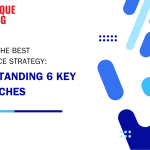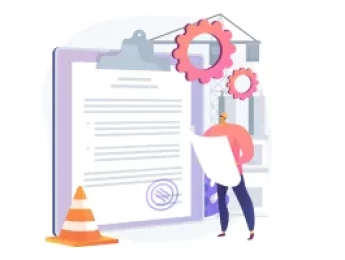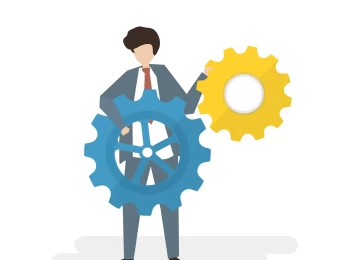A range of industries and organisations strongly rely on the use of heavy machinery and potentially dangerous equipment. To increase employee safety and productivity, these organisations may adapt various maintenance procedures. Total production maintenance is an increasingly popular maintenance standard due to its effectiveness.
Total production maintenance (TPM) focuses on the health and safety of employees by making them responsible for the equipment they use. Having employees engage more closely with their equipment aids in knowledge development and allows them to become more aware of it. This can lead them to notice issues or potential failures long before they occur.
Not only does it increase safety, but it is also proven to increase organisational productivity. TPM has 8 main pillars, which all work together to guarantee the organisation's normal function and improvement over time. TPM has a method of measuring equipment productivity that can highlight the true percentage of production and provide solutions to increasing this.
Upon completion of this course, participants will be able to:
- Understand the importance of productive maintenance procedures within an organisation.
- Explain productive maintenance procedures' concepts, principles, and purpose, primarily Total Productive Maintenance (TPM).
- Recognise the consequences of poor productive maintenance procedures.
- Explore what internal and external factors may influence maintenance procedures.
- Evaluate and determine the overall equipment effectiveness (OEE) of machinery.
- Utilise various methods and techniques to improve the efficiency of tools and machinery without sacrificing safety.
- Analyse machinery regularly and predict where failures or potential risks are likely to occur.
This course is designed for anyone involved in or responsible for maintaining heavy machinery or ensuring productivity in a maintenance setting. It would be most beneficial for:
- Operations Managers
- HSE Officers
- Production Managers
- Senior Engineers
- Maintenance Directors
- Continuous Improvement Managers
- Labour Relations Managers
This course uses a variety of adult learning styles to aid full understanding and comprehension. Participants will review case studies of established organisations and how they have integrated TPM into their standard practices to highlight key features and changes that have led to increased productivity. Participants will be offered the opportunity to partake in various learning exercises and methods, including seminars, discussions, video material and practical activities. This combination of learning methods will guarantee the participants can develop a full and comprehensive understanding of the taught content and related skills.
Day 5 of each course is reserved for a Q&A session, which may occur off-site. For 10-day courses, this also applies to day 10
Section 1: Introduction to Productive Maintenance Procedures
- Defining what productive maintenance procedures are, their necessity and their importance within an organisation.
- Understanding what internal and external factors may influence the machine and employee productivity.
- Describe what total productive maintenance is and what its history is within the industry.
- Explaining the 5S foundation of total productive maintenance is – sort, straighten, shine, standardise and sustain.
Section 2: The Concept of Total Productive Maintenance
- Exploring the history of TPM and how it has evolved from its creation.
- Assessing the concepts, principles, and purpose of TPM.
- Identifying the 8 key pillars of TPM and understanding how they work hand in hand:
- Autonomous maintenance
- Planning maintenance
- Quality maintenance
- Focused improvement
- Early equipment management
- Training and education
- Safety, health, and environment
- TPM in administration
- Maximising productivity and health and safety throughout an organisation.
Section 3: Overall Equipment Effectiveness
- Defining overall equipment effectiveness (OEE) and its role within TPM.
- Exploring the 3 main components of OEE – availability loss, performance loss and quality loss.
- Utilising various methods to accurately calculate the organisation’s OEE by thoroughly assessing the different factors.
- Analysing OEE data to understand how much of the organisation’s production time is genuinely productive.
- Comparing results to other organisations and to industry standards and creating a further development plan based on these results.
Section 4: Planned and Autonomous Maintenance
- How regular maintenance is vital in preventing ‘down-time’ and reducing unproductivity.
- What is meant by the terms ‘autonomous maintenance’ and ‘planned maintenance’ In a TPM context.
- Increasing equipment safety by providing a sense of ‘ownership’ to the equipment operators.
- Guaranteeing the regular maintenance of equipment to prevent potential failures and emergencies.
Section 5: Health and Safety
- How TPM prioritises employee safety.
- Increasing employee’s knowledge of equipment and procedures will allow them to better identify potential risks before they occur.
- Utilising TPM maintenance standards to regularly maintain equipment.
- Conduct regular risk assessments to identify all potential risks and create risk management plans in alignment with TPM standards.
- Ensuring full compliance with relevant health and safety regulations.
Upon successful completion of this training course, delegates will be awarded a Holistique Training Certificate of Completion. For those who attend and complete the online training course, a Holistique Training e-Certificate will be provided.
Holistique Training Certificates are accredited by the British Assessment Council (BAC) and The CPD Certification Service (CPD), and are certified under ISO 9001, ISO 21001, and ISO 29993 standards.
CPD credits for this course are granted by our Certificates and will be reflected on the Holistique Training Certificate of Completion. In accordance with the standards of The CPD Certification Service, one CPD credit is awarded per hour of course attendance. A maximum of 50 CPD credits can be claimed for any single course we currently offer.
- Course Code IND14-106
- Course Format Classroom, Online,
- Duration 5 days













